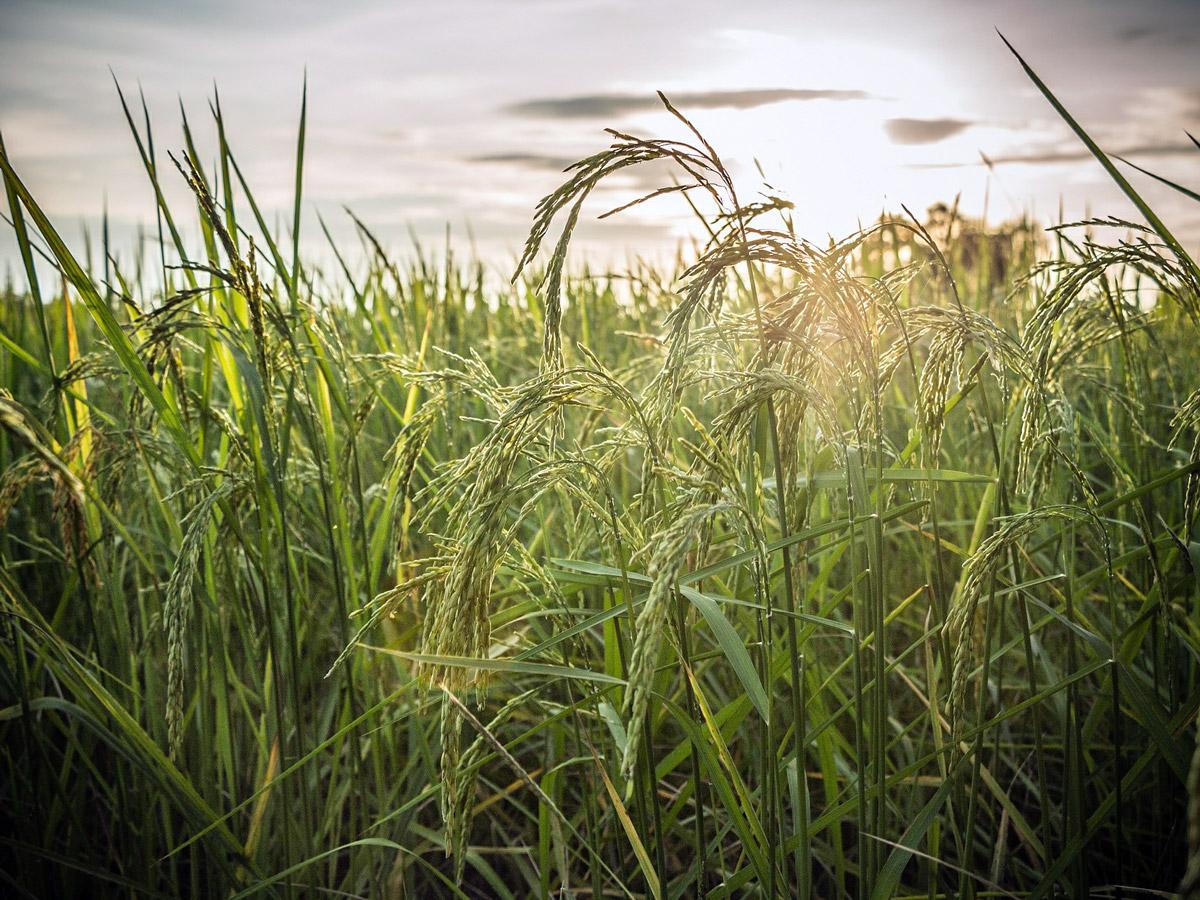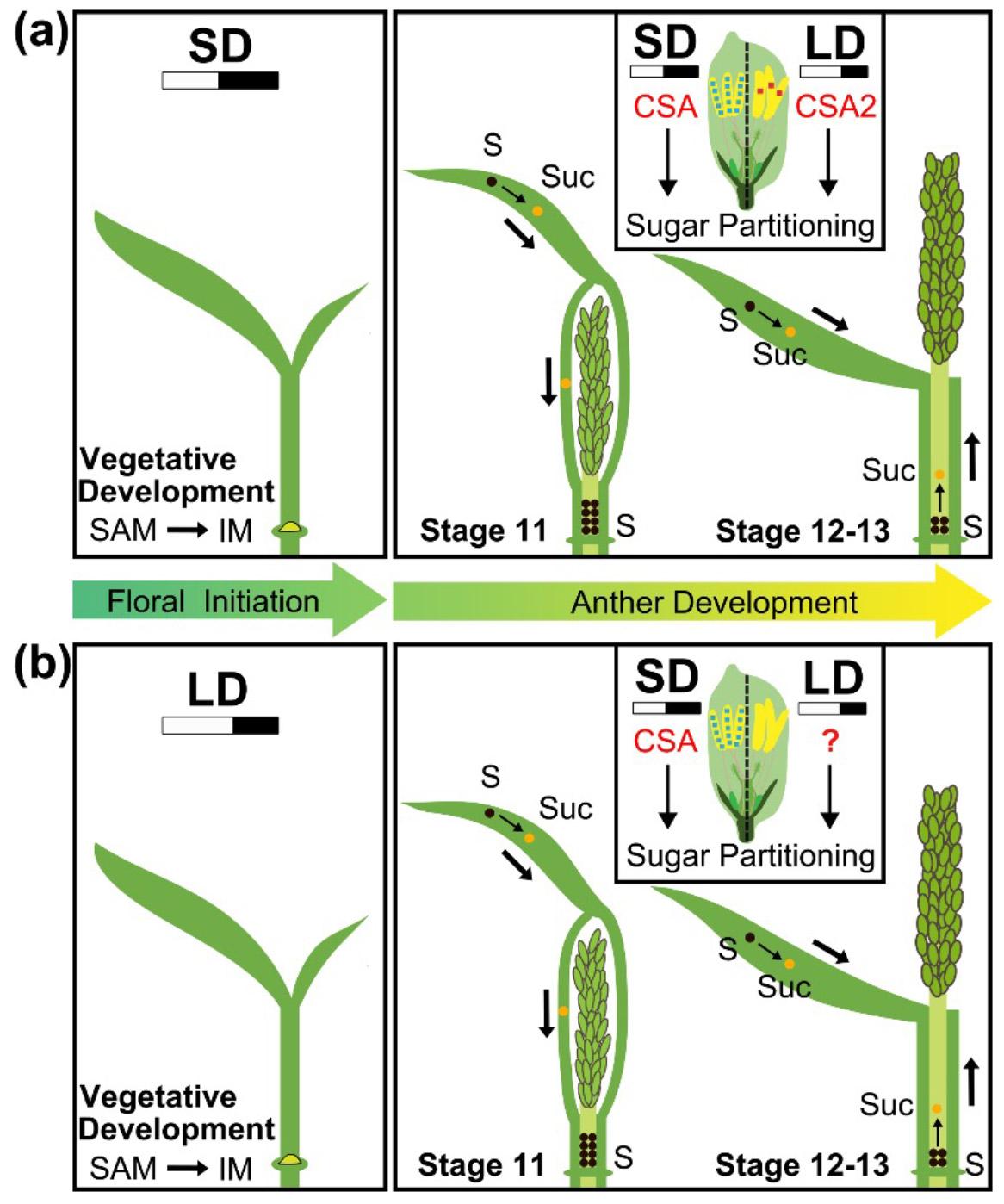Scientists find opposite rice proteins work together to promote plant fertility

Plants need sunlight to survive and reproduce – but what happens when there’s not enough sun, such as on shorter days of the year?
Researchers at the University of Adelaide and Shanghai Jiao Tong University have made discoveries which provide new information on how hybrid rice plants maintain male fertility under different day lengths. Their findings provide important knowledge for scientists involved in breeding new rice crops which are less sensitive to changing daylight levels.
The scientists found that two MYB proteins in rice called carbon starved anthers - known as CSA2 and CSA – work together to regulate male fertility by changing how and where sugars are used by the plant. CSA2 plays a major role on days with more sunlight, while CSA is important under short-day conditions.
“Sunlight is not just the energy provider during photosynthesis, but also acts as one of the most important environmental clues that affect plant growth and development,” said lead author Professor Dabing Zhang, of the Shanghai Jiao Tong University - University of Adelaide Joint Laboratory for Plant Science and Breeding.
“Plants have formed a series of mechanisms to respond to changing day lengths to maintain their survival. We’ve observed that male fertility is impacted by the amount of sunlight obtained by plants used in hybrid breeding.”
However, little is known about how plants evolved their molecular regulators in controlling male fertility to adapt to different sunlight signals.
The researchers previously isolated a reverse photoperiod-sensitive male sterile mutant CSA by using a forward genetics approach. CSA encodes a MYB transcription factor and is required for rice anther and seed development.
The CSA mutant is completely male sterile under short-day conditions because the sugar can’t travel from the leaf to the anthers.
“Surprisingly, in the new study, we found that the male sterility of CSA can be rescued by CSA2 under short-day conditions, and transcriptomic analysis reveals that both proteins have a shared and distinct set of target genes during male reproduction,” said Professor Zhang.
“Genetically, the role of CSA2-medidated long-day-dependent male fertility also relies on the short-day conditions during floral initiation.”
The study, published in New Phytologist, provides new insights into the molecular mechanisms that regulate male fertility in response to day lengths. The ongoing research aims to improve the success of current and future rice breeding programs.
Image: Schematic model for the photoperiod-dependent functions of CSA and CSA2 in anther development in rice. View larger image.
Different day length conditions are considered for both floral initiation and anther development. In (a), the transition from shoot apical meristem (SAM) to inflorescence meristem (IM) is initiated under SD conditions, after which anther development occurs under either SD or LD conditions. In this scenario, CSA or CSA2 regulates sugar partitioning in anthers under SD or LD conditions, respectively.
In (b), floral initiation occurs under LD conditions, and again, anther development occurs under either SD or LD conditions. CSA also plays an important role in sugar partitioning in anthers under SD conditions, but CSA2 loses its regulatory function in anthers under LD conditions. Flowers in black frames indicate the spikelets at late stages of anther development. Blue and red dots indicate the proteins of CSA and CSA2 in the anthers, respectively. S, starch; Suc, sucrose.

